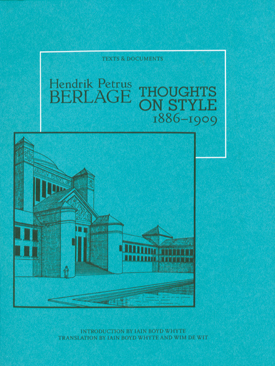Theory, Culture & Society 23(2-3): Problematizing Global Knowledge (2006)
Filed under book, journal | Tags: · aesthetics, archive, assemblage, body, classification, culture, encyclopedia, globalisation, information, knowledge, knowledge production, language, library, life, logic, media, modernity, network, public sphere, race, religion, science, space, technology, theory, time, translation, university, vitalism

In this special issue the TCS editorial board, along with colleagues in East and South-East Asia and other parts of the world, ventured in ‘encyclopaedic explorations’ in order to “rethink knowledge under the impact of globalization and digitization. The issue features over 150 entries and supplements on a range of topics which are addressed in terms of their relevance to knowledge formation, by contributors writing from a wide range of perspectives and different parts of the world. The entries and supplements are gathered under three main headings: metaconcepts, metanarratives and sites and institutions.”
Edited by Mike Featherstone, Couze Venn, Ryan Bishop and John Phillips, with Pal Ahluwalia, Roy Boyne, Beng Huat Chua, John Hutnyk, Scott Lash, Maria Esther Maciel, George Marcus, Aihwa Ong, Roland Robertson, Bryan Turner, Shiv Visvanathan, Shunya Yoshimi
With an Introduction by Mike Featherstone and Couze Venn
Publisher Sage, 2006
616 pages
Journal of Aesthetics & Culture, 4: From Sign to Signal (2012)
Filed under book | Tags: · aesthetics, art theory, electronic art, film, interface, media, media art, media technology, new media, semiotics, sign, signal processing, technology, theory

“Since the 1990s there has been intensified focus on the concepts of performativity, the relational, and affect in the humanities. Scholars from different fields have in a variety of ways embraced these notions in their accounts of contemporary culture, and as such they also form the backdrop of this thematic collection of articles entitled From Sign to Signal. It seems, however, as if today’s media situation–the globally evident usage of media technologies–requires a new theoretical approach in order to deal with the intersections of technology and aesthetics, since in these cases the sign often falls short. It has therefore been the ambition of this collection to invite scholars within the humanities to take part in a discussion on the implications of a gradual shift from a (linguistically framed) paradigm of the sign to a new paradigm connected with media augmented environments.
As the term for this new paradigm we have chosen the ‘signaletic material’, coined by Gilles Deleuze in his book Cinema 2: The Time-Image. Deleuze developed this notion in order to stress that film in his view of contemporary or modern cinema had altogether eliminated classical (literary) thoughts of plot and narration. Toward the end of Cinema 2 it becomes clear that the notion of the ‘signaletic material’ might be developed to cover all kinds of filmic and electronic material as well as the emerging new media technologies.” (from Foreword)
Edited by Bodil Marie Stavning Thomsen, John Sundholm and Ulla Angkjær Jørgensen
Publisher Co-Action Publishing, Järfälla, Sweden, 2012
Creative Commons CC-BY 4.0 License
eISSN 2000-4214
134 pages
HTML, PDFs (updated on 2017-10-27)
single PDF
Hendrik Petrus Berlage: Thoughts on Style, 1886–1909 (1996)
Filed under book | Tags: · aesthetics, architecture, art history, modernism, style, theory

“Looking back to the period around 1910, Mies van der Rohe once commented that there was but a single architect then working on the European architectural scene, “Berlage was a lone giant.”
In parallel activities as both an architect and an architectural philosopher, H. P. Berlage created a series of buildings that witnessed the gestation and birth of architectural Modernism and a body of writings that probed in depth the problems and possibilities of this new style. But whereas his Stock Exchange in Amsterdam, with its rational mastery of materials and space, has long been celebrated for its seminal influence on the architecture of the new century, Berlage’s passionate writings on architecture, which exerted an equal influence on his contemporaries, have often been neglected.
In his wide-ranging critical introduction, Iain Boyd Whyte convincingly demonstrates that one corpus of work cannot be understood without taking into account the other: Berlage’s writings inform his architecture to the same extent that his buildings reflect his probing aesthetic deliberations. Berlage’s principal texts are here brought together in English translation for the first time. Collectively, they present to the English-language reader a new and vital chapter in the history of European modernism.”
Introduction by Iain Boyd Whyte
Translated by Iain Boyd Whyte and Wim de Wit
Publisher Getty Center for the History of Art and the Humanities, Santa Monica/CA, 1996
Texts & Documents series
ISBN 0892363339, 9780892363339
331 pages
Review: Suzanne Frank (J Arch Education 1997).
Comment (0)
